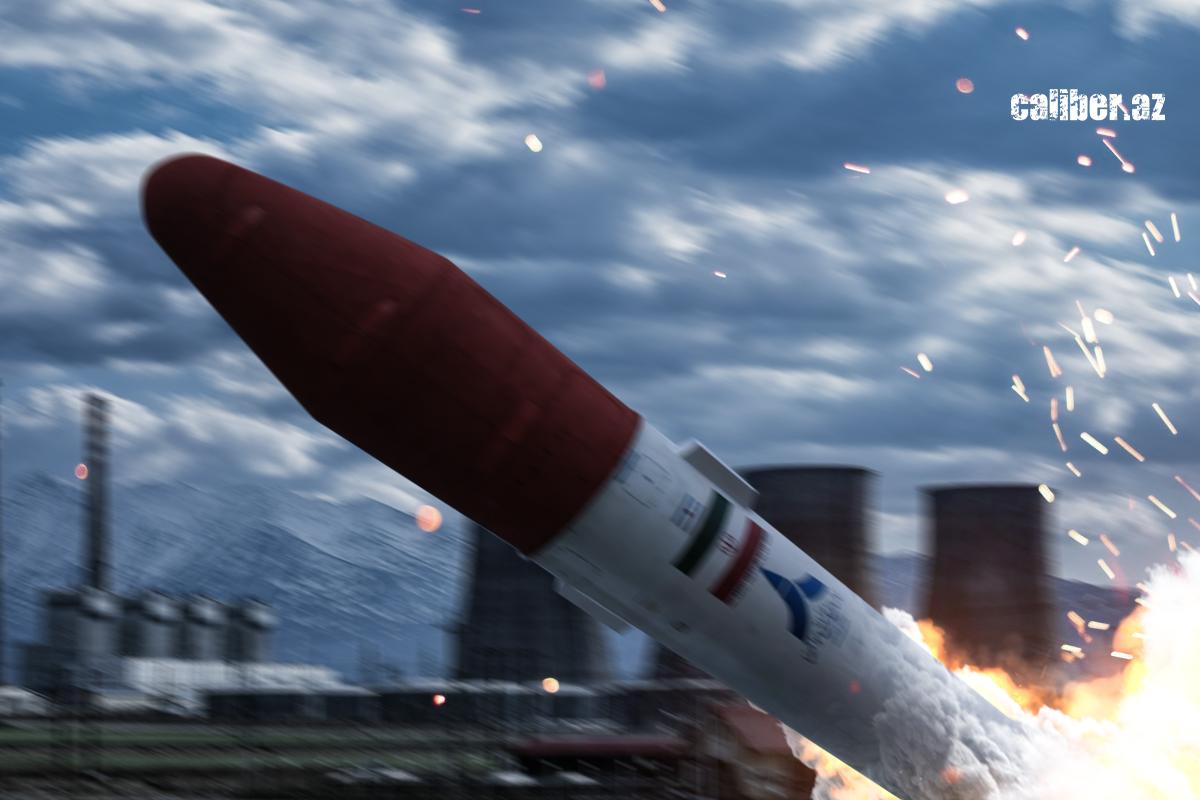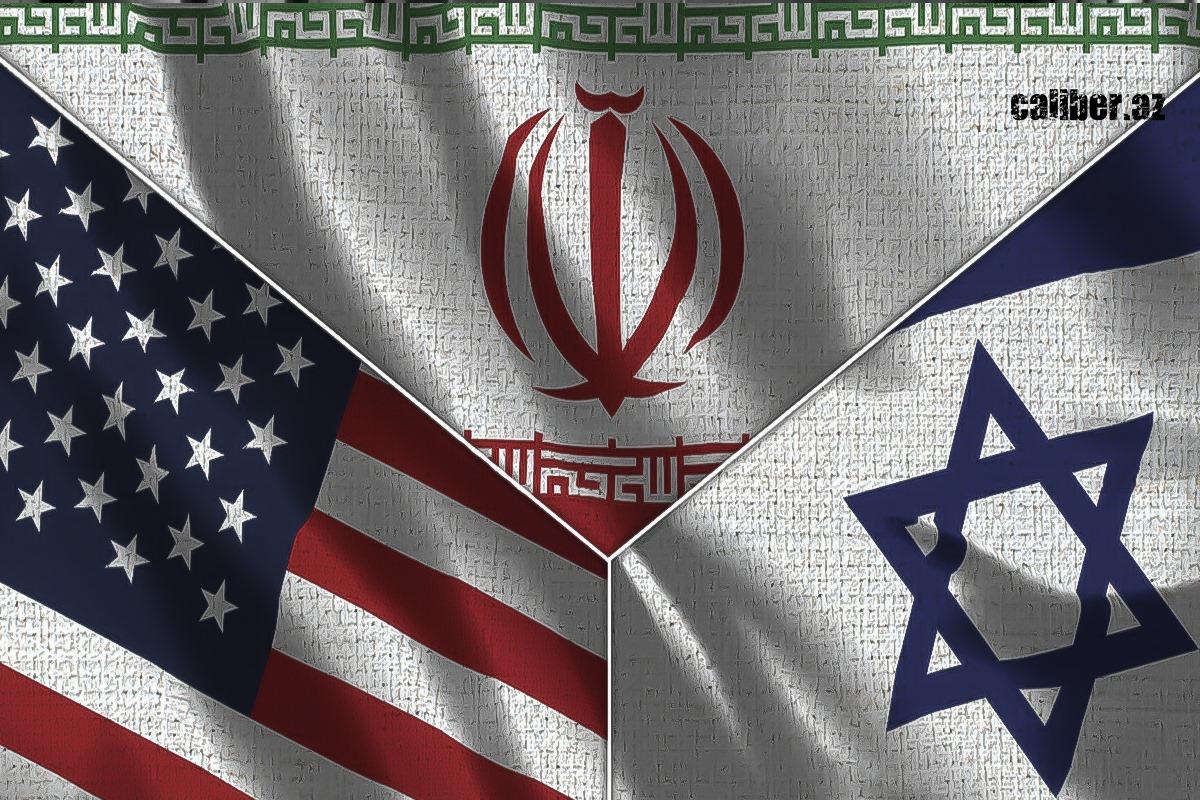Iran-Israel: confrontation, opportunities and constraints Caliber.Az analysis
On the night of April 19, Israel launched a strike on Iranian territory. Several warplanes fired missiles at and destroyed a S-300 air defence radar near the city of Isfahan. They may not have entered Iranian airspace.
The strike came after Iran fired hundreds of cruise missiles, ballistic missiles and drones at Israel in an attempt to hit its military bases and infrastructure: almost all of the means Iran used to attack Israel were shot down. The direct exchange of blows between the countries began after Israel struck the Iranian consulate in Damascus on 1 April, killing 7 high-ranking Iranian military officers there, including General Rezaei, who commands all Iranian forces in Syria and Lebanon. These strikes showcased the ongoing confrontation between the two countries, revealing their capabilities and limitations.
What did Israel and Iran show each other?
So, the sides demonstrated their capabilities to each other. This is typical of the Middle East, where the conversation between the leaders of states is often conducted in the language of missile strikes. Iranian expert Hamidreza Azizi notes, first of all, the importance of the choice of the location of the strike. The city of Isfahan is deep inside the country, indicating Israel's intelligence and operational access. The eighth fighter base reportedly targeted is home to Su-24s (bombers) and F-14s (fighter jets), which play a role in the air defence of Iran's nuclear facilities located in Isfahan province.
Military analyst Dr Amir Bukhbut, speaking on the Israeli news platform Walla, described the exchange of blows as follows: "Iran attacked Israel's rear with more than 500 weapons, including ballistic missiles, cruise missiles and drones, with 99 per cent of them intercepted and the few that landed inside Israel causing no real damage. The attacking side tonight (April 20) achieved a higher effect and damage with a tenth of the weapons used by the Iranians and presented the Islamic Revolutionary Guards helpless in defence and without any response. The attacker tonight (April 20) destroyed the radar of the S-300 system. The Iranians are now well aware that if indeed Israel is responsible for the wave of attacks at night in the Middle East, then next time it may also attack nuclear facilities that are close to the targets of the attacks. All this despite the pressure exerted on Israel by the US and European countries to calm down and not escalate the situation."
By carrying out the strikes, Iran said it could send large swarms of drones and missiles at the enemy and keep a small area of Israel under fire. Almost everything was shot down, but it is worth remembering that Iran's allied Hezbollah, which controls Israel's neighbouring Lebanon, has a stockpile of 150,000-200,000 missiles, including thousands of precision missiles, as well as thousands of drones and is increasing their production. In addition, repelling such strikes is a complex and costly endeavour: Israel spent over a billion dollars overnight. And the supply of anti-missiles is not unlimited, and besides, they are manufactured in the United States, which is especially important (we will explain why below), and finally, a third of the missiles were shot down by the US Air Force and its allies on approach to Israel, which also demonstrated the country's dependence on the Americans.

Israel's tiny territory may be shielded from such strikes, and its missile defence systems may be the best in the world, but the country is not safe. It is home to 10 million citizens, with half or more living in a narrow strip of towns along the coastline. Israel has only two refineries that provide fuel, and the country is critically dependent on the major port of Haifa, near Lebanon. The high population density exacerbates concerns. Iran and Hezbollah have the capability to continuously bombard Israel with rockets for months. Even if they can't breach the ABM, they could do enormous damage and possibly cause collapse - the economy won't work to the incessant sound of sirens as crowds of people try to take shelter from the blows.
For its part, Iran faced a formidable adversary who effortlessly struck at the heart of the country, demonstrating the helplessness of Iranian air defences. Israel's scientific and technological superiority is obvious, as is its high level of intelligence, awareness. This means it is capable of hurting Tehran by destroying its nuclear and missile industries, hitting its government facilities and politicians. Israel has shown that it can destroy Iranian air defences even deep inside the country. If it destroys them, then the Israeli Air Force - the most powerful in the region - will do whatever it wants to Iran.
Both sides didn't whip up a propaganda campaign over the latest strike. They pretended as if nothing terrible had happened. Such a development indicates that they are not willing or able to continue the escalating exchange of direct blows at this time. And it's not just because everyone has seen the capabilities of the other side.
The US is trying to stop the escalation
It is no coincidence that Israel warned the US in advance of plans to strike Iran within 24-48 hours. A senior US official told the Bloomberg publication. Earlier, Israel failed to warn Washington about a strike on Damascus on April 1, a move that enraged the Biden administration. US Defence Secretary Lloyd Austin demanded that Israel not do so again. His words seem to have been heeded.
The US does not want a major war between Iran and Israel. The answer to the question of why they are so inclined can be found in the stock market reports. After the Isfahan strike, the price of Brent crude jumped to $90 a barrel. A sharp rise in oil prices, if it continues, could push the US economy into recession, and that is exactly what Biden needs to avoid on the eve of the election. Another consideration is equally important: the US is a military and political ally of Israel and does not want to be dragged into a major Middle East war - again, it is too risky, especially in an election year. That's why Biden called Israeli Prime Minister Benjamin Netanyahu after the Iranian strike and pointed out to him the undesirability of a retaliatory strike on Iran. And while the Israeli strike did come, it was an order of magnitude, if not two orders of magnitude, weaker than what Netanyahu would have wished for. Israel's leader dreams of unleashing a wave of attacks on Iran, destroying its nuclear industry to prevent Iran from advancing to nuclear weapons. Israel has not gone down that path.

Previously, Biden demanded that Israel withdraw troops from the southern Gaza Strip, and then Israel also complied. The reason probably lies in the dependence of the Israel Defense Forces (IDF) on American supplies of shells, missiles, bombs, spare parts, etc. During the six months of the war in Gaza, the military depleted its supplies. For example, interceptor missiles for the Israeli missile defence system are made in the United States; How would Israel fight back without them? Today everything depends on the will of Washington and its ability to prevent a major war in the Middle East. Otherwise, the conflict will take on an autonomous character, begin to develop according to its own laws, and the escalation will begin to drag on not only Iran and Israel, but also Lebanon, Syria, Iraq, and countries controlled by Iranian proxies.
Reaction in Iran
Another curious aspect was the attitude of Iranians themselves to what was happening. On the one hand, the authorities brought loyalists into the streets of Tehran to celebrate the strikes against Israel. On the other hand, graffiti appeared on the walls of houses: "Israel, hit, we will do the rest in the streets!" and "Israel, hit Khamenei!". This graffiti reflects the sentiments of part of Iranian society.
Prior to the Israeli strike, Iran's vice police have resumed work. The enforcers attack women who do not wear hijabs or wear them "incorrectly". Such attacks are incredibly hateful in Iran. Today it is a country with a high level of education - millions of students study at universities, and there are as many women as men. According to social surveys, more than 70 per cent of citizens are in favour of the separation of religion from the state, and the number is growing all the time. After the vice police killed 22-year-old Mahsa Amini in Tehran in the autumn of 2022, the country was shaken by mass protests for more than six months.
Another reason for hating the authorities is rising prices and corruption. Most Iranians live at or below the poverty line. After exchanging blows with Israel, the Iranian currency has declined rapidly, which will inevitably lead to a new price hike. The inefficient economy has given rise to powerful strikes that threaten the regime's stability, even if they make purely economic demands.
Finally, Iran's national minorities are in constant revolt, protesting discrimination, lack of education in local languages, and the diversion of funds from their regions to Persian-speaking provinces. These minorities - Azerbaijanis, Kurds, Baluchis and others - together make up half of the country's population, if not more.
In such circumstances, Iran's leadership should consider whether it is advantageous for it to engage in an all-out confrontation with Israel. War is an old tried and tested way of mobilising the population and rallying it under patriotic slogans around the regime. However, a significant part of Iranians share anti-war or even defeatist sentiments. And this factor also affects the current situation.
The views and opinions expressed by guest columnists in their op-eds may differ from and do not necessarily reflect the views of the editorial staff.








